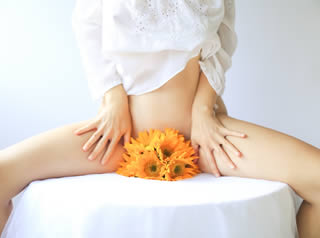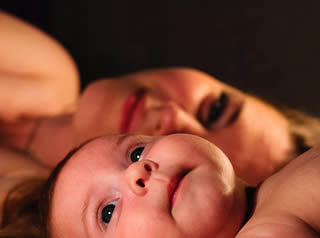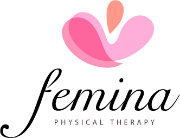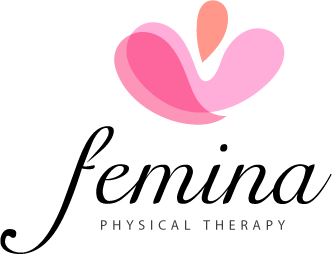
The Femina Physical Therapy Blog
Featuring original articles by our staff about current events and trends
Explore our insightful blog articles on pelvic health, where we delve into essential topics that empower and educate. From understanding pelvic floor disorders to strategies for conquering infertility, our content is designed for those seeking knowledge and support. We discuss the latest research, expert advice, and practical tips to enhance your well-being and foster a deeper connection to your body.
Featured From the Blog:
Vulvovaginal Moisturizers: Who Needs One & Choosing the Right One

Choosing the Right Vulvovaginal Moisturizer
Assuming you need one, make sure it's got the right ingredient list
There are many reasons why those born with female anatomy may require the use of a vulvovaginal moisturizer throughout their lifetime. As you age, the vaginal and vulvar tissues tend to become drier and less elastic. This change is typically seen around the time one goes through menopause due to the drop in estrogen that occurs. The vulvovaginal tissues are very sensitive to hormonal changes and estrogen is the hormone that controls vaginal lubrication, as well as tissue elasticity and thickness.
Read more: Vulvovaginal Moisturizers: Who Needs One & Choosing the...
Restorative 20 Minute Home Yoga Practice For Chronic Pelvic Pain

Yoga Practice For Chronic Pelvic Pain Can Be a Very Helpful Routine
As stated in my last blog post, yoga can be so beneficial as a pain management tool due to its ability to modulate the sympathetic nervous system3,4 which plays a large role in chronic pain. The exact mechanism of how yoga helps with chronic pain is still being studied, however, it is reasonable to believe the full body relaxation promoted by a yoga practice helps to decrease tension in key muscle groups- including the hips and pelvic floor which are often tight in people with chronic pelvic pain.
Currently, evidence has mostly focused on one hour long practices as an intervention, although there are some studies that report improvements in pain with shorter practices, such as the routine below. As with any mobility/stretching routine, benefits will be seen with more frequent practice, however even twice weekly can help decrease pain.
Read more: Restorative 20 Minute Home Yoga Practice For Chronic...
Postpartum Sexuality & Mood Changes in Women with Pelvic Girdle Pain

Does my pelvic girdle pain have anything to do with my mood and sexuality?
Many of our patients experience sexual dysfunction and anxiety, depression and chronic pain. These conditions are known to coexist, and we unpack each component of pain, mood and one’s behaviors, desires and attitudes related to sex and physical intimacy.
Pelvic girdle pain is defined as “pain between the posterior iliac crests and gluteal folds particularly in the vicinity of the sacroiliac joint” (Simonds). More simply stated: in the very low area of your back and buttock. Pelvic girdle pain is common postpartum and may impact disability in the fourth trimester. Many are aware of peripartum symptoms such as low back pain, incontinence, pelvic organ prolapse, pain with intercourse, and postpartum depression. Knowing that many women experience pain during and after pregnancy - what can we learn about the effects of pelvic girdle pain? Specifically, what impact does pelvic girdle pain have on symptoms of mood and sexuality?
Read more: Postpartum Sexuality & Mood Changes in Women with Pelvic...
- Details
- Written by: Staff
- 13678 Views

Upright Labor Positions for the Second Stage of Labor
If you missed part 1 in the vaginal childbirth positioning series, go back and read it here.
Childbirth/labor is quite an experience, and it can be scary waiting for the unknown. Being prepared, knowing, and being familiar with different options and labor positions is the best way to approach childbirth to help decrease as much anxiety should surprises arise.
This article will go over specific labor positions that help progress labor, and prevent perineal trauma.
As mentioned in Part 1: Pre-Birth article, it’s important to keep changing labor positions to help progress, preferably in different upright labor positions. As a reminder, the first stage is all about increasing the pelvic inlet to help guide the baby through the mid pelvis and finally towards the pelvic outlet/vaginal canal.
Read more: Vaginal Childbirth Positioning Series | Part 2: Upright...
- Details
- Written by: Staff
- 7933 Views

Positioning for the Pre-Birth Stage of Labor
What to Expect and What to Focus On:
If you have been pregnant for many months now, it is time to get ready for your upcoming birth! Similar to a marathon, we need to train for childbirth to prepare the muscles and body for the big event. For this reason, it is a good idea to start practicing being in different positions either with movement or holding a position for a long time. The pre-birth stage of labor involves contractions to dilate and open the cervix. Once the cervix is fully dilated, the second stage includes the passive and active phases of the baby crowning and coming out of the vaginal canal. The third stage involves the delivery of the placenta. We will go over how to best support our bodies throughout your childbirth journey.
Positioning for the Stages of Labor
Practicing and knowing different positions during this first stage can be helpful when pain may escalate. Upright positioning such as: walking, standing, rocking back and forth, kneeling over birthing ball, leaning against wall, holding onto partner are just some of the many, many positions that can be helpful.
Read more: Vaginal Childbirth Positioning Series | Part 1: Pre-Birth...
- Details
- Written by: Staff
- 8284 Views

Postpartum Pelvic Health Recovery Should Start Day 1.
Here are some tips to help you get your postpartum pelvic health (and general health) back on track:
This article focuses on 5 key techniques you can use to improve postpartum pelvic health. It covers diaphragmatic breathing to activate core muscles and kickstart lymphatic drainage, pelvic floor muscle coordination, posture, and the benefits of a pelvic floor evaluation by a physical therapist to begin improving postpartum pelvic health on day 1. It also provides detailed instructions and references scientific studies to provide further research.
Read more: 5 Things You Can do to Improve Postpartum Pelvic Health
- Details
- Written by: Staff
- 7934 Views
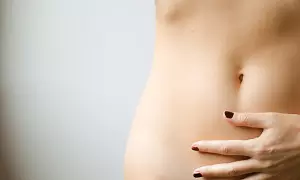
Interstitial Cystitis, Multimodal Treatments, and How Pelvic Health Physical Therapy Helps IC
Interstitial cystitis (IC) also known as bladder pain syndrome or painful bladder syndrome, is a debilitating condition that significantly affects the quality of life of patients living with it.
The definition of IC from an international consensus is:
An unpleasant sensation (pain, pressure, discomfort) perceived to be related to the urinary bladder, associated with lower urinary tract symptoms of more than six weeks duration, in the absence of infection or other identifiable cause" (Hanno et al, 2009).
Interstitial cystitis affects 6-11% of women and 2–5% of men and increases with age from 1.7% under the age of 65 and up to 4.0% in women aged 80 years or older (Clemens et al., 2007 and Lifford et al., 2009). Patients that live with IC report that their quality of life is significantly impacted affecting their psychosocial, work-life, psychological well-being, personal relationships, and general health (Clemens et al., 2007). One important domain that is affected by IC is sexual function. Women with IC rated their sexual dysfunction as moderate to severe when compared to controls and reported increased pain with intercourse, decreased desire, and decreased frequency of orgasm (Peters et al., 2007 and Tincello et al., 2005).
Read more: What is Interstitial Cystitis and How Pelvic Health...
- Details
- Written by: Staff
- 6717 Views

Whether you're asking for a friend or for yourself, it's an important question these days.
Practicing social distancing and wearing a mask can make it quite difficult to have intimate relationships.
Through the last year and half, we have learned more about COVID-19 and each and every day new data helps us better understand this virus and how to practice safe sex during COVID.
How is the virus transmitted?
The virus spreads through infected saliva, mucus, or respiratory particles entering the eyes, nose, or mouth. This means it can be transmitted through kissing and close contact. Studies have also detected the virus in feces and in sperm in those infected (Diangeng et al., 2020). It is unknown at this point if the virus can be spread through sperm or feces. Educating yourself can be the key to safe sex during COVID-19.
Read more: Sexual Health Awareness Month | Safe Sex During Covid-19
- Details
- Written by: Staff
- 19922 Views

Levator Ani Avulsion: Understand your pelvic anatomy to better understand your injury
The pelvic floor is a group of muscles positioned like a hammock along our saddle region.
The group of muscles attach from our pubic bone on the inside and then to our lateral pelvic walls with a bundle of collagen fibers called the levator arch, and attach to the ischial spines (the inside of the sit bones) and tailbone on the back side. During vaginal childbirth, the pubococcygeus muscle, a group of pelvic floor muscles, stretches 3.26 times more than its normal length to make room for the coming baby in the vaginal canal! As you can imagine, this may result in some perineal tearing and/or levator ani avulsion.
Read more: Pelvic Floor Injury During Childbirth: All About Levator...
- Details
- Written by: Staff
- 10619 Views

A recent study connects anxiety, urinary incontinence and depression in women
What is urinary incontinence?
Urinary incontinence refers to the loss of urine, out of your control. There is actually more than one kind of urinary incontinence: the two most common types of urinary incontinence that affect women are stress incontinence and urge incontinence (also called overactive bladder, or OAB).
- Stress Incontinence: urine leaking with physical activity - sneezing, coughing, laughing, lifting, pushing/pulling, jumping.
- Urge Incontinence: urine leakage that is coupled with urgency to go- leaking while you’re in line for the toilet, leaking/urgency when you’re parking your car in the driveway, putting the key in the door, fumbling with your pants, etc.
- Mixed UI: a combination of stress and urge symptoms
Read more: Urinary Incontinence and Depression | What's the Connection?
- Details
- Written by: Staff
- 7514 Views

A healthy lifestyle includes getting back to exercise postpartum
Exercise has shown to be beneficial in all stages of life, and the postpartum period is no exception.
Some of the benefits of postpartum exercise are:
- Strengthen and tone abdominal muscles
- Boosts energy
- May help prevent postpartum depression
- Promotes better sleep
- Relieves stress
- Can help you lose the extra weight that you may have gained during pregnancy
(ACOG, July 2019).
Even with all these benefits, research shows that most mothers stop participating in exercise programs which leads to increased weight gain and obesity (Minig et al., and O’Toole et al., 2003). There are many adjustments that have to be made when becoming a new mother and the information on the internet regarding postpartum exercise can be misguided and overwhelming. Let's break down what the literature says about guidelines for returning to exercise postpartum.
